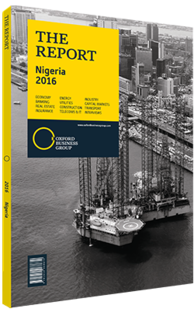Lower cement prices likely to encourage activity in Nigeria
Recent developments in Nigeria’s cement industry bode well for the construction sector moving forward. Indeed, capacity expansion and greater competition should help drive down prices in a market that remains comparatively expensive.
Market Size
Cement is one of the few building materials in which Nigeria is self-sufficient. The country is home to two of the three largest materials firms listed on African stock markets: local firm Dangote Cement and Lafarge Africa, which is the African subsidiary of the French global cement producer. The former currently has a production capacity of 29.25m tonnes per annum (tpa), while the latter has a capacity of 8m tpa. BUA Cement, another local producer, adds a further 3.5m tpa to the industry’s annual production capacity. This easily exceeds the average annual consumption of cement in the country, which stands at 20m tpa, according to Dangote Cement.
Prices
Given the imbalance of supply and demand, pricing in the local market has historically remained surprisingly and robustly inflated. In 2013 a 50-kg bag of cement in Nigeria reached more than N2500 ($7.89). The following year, during a glut, the price dropped to N1650-1800 ($5.21-5.68), but still remained above pricing in the neighbouring markets of Ghana and Benin. Indeed, the Nigerian figure was as much as double the average price in many nations around the world in 2013, as well as in the markets of regional stalwarts like Kenya and South Africa.
However, recent developments may see a favourable transformation in the sector. In February 2016 Dangote Cement announced that it was slashing the price of its 50-kg bag in the local market on the back of capacity additions. The company reduced its price from N1800 ($5.68) to N1300 ($4.10) per bag. In a February 2016 statement to the press Onne Vander Weijde, group managing director of Dangote Cement, said, “Consumer prices have fallen by 35% in naira terms, but if you take it in dollar terms and relate it with today’s parallel market rates, you will realise the price of the product has gone down in Nigeria, and in some cases below the prevailing average global price.” Not everybody is certain that this will spur demand in the market. In response to Dangote Cement’s price cut in 2015, Tajudeen Ibrahim, head of equity research at local investment bank Chapel Hill Denham Securities, told local newspaper This Day that “the sales volumes of the cement industry may, however, not rise on the back of the price cut, as the relationship between price and consumption is weak”. Indeed, the current cement glut is unlikely to be resolved simply by price reductions.
New Capacity
The price move is still welcome news and is likely to help counter price reductions by other cement producers in the market, according to Ibrahim. Indeed, it seems clear that competition is growing in the local market not only in terms of pricing, but also due to new capacity additions that will begin to challenge Dangote Cement’s dominant position in the Nigerian industry.
In November 2015 Lafarge Africa’s completed is acquisition of local producer Unicem, which will add 5m tonnes to the company’s portfolio and consolidate its position in the local market. This followed in September 2016 by a statement from BUA Group unveiling a deal with China’s Sinoma International Engineering Company to double capacity at its Obu plant to more than 7m tonnes a year by 2017.
In February 2016 Dangote Cement announced plans to develop two new cement plants in Edo and Ogun states. The new plants will add 9m tpa of cement to the local market and bring the firm’s total Nigerian capacity to 38.25m tpa. These moves are a bright spot for a struggling construction industry, as they will not only decrease any foreign exchange risk associated with imported cement, but also drive down prices in the market as supply increases. Given the high cost, additional production is welcome news.
You have reached the limit of premium articles you can view for free.
Choose from the options below to purchase print or digital editions of our Reports. You can also purchase a website subscription giving you unlimited access to all of our Reports online for 12 months.
If you have already purchased this Report or have a website subscription, please login to continue.

